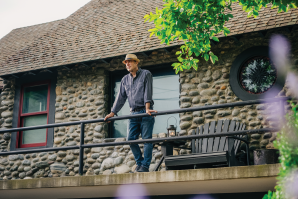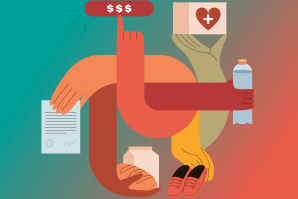
Dilemma of the Month: Do I Have to Tell External Candidates I’m Considering Someone Internal?
I have received feedback from candidates asking me why I didn’t
tell them this upfront. They share that they feel defeated and
that the interview wastes time when they find out they weren’t
chosen. What is best practice?

In Northern California, the Natural Landscape Lures Outdoor Lovers With a Wide Variety of Recreational Activities
Great outdoor adventures abound in the Capital Region and beyond
Beautiful natural resources like this make Northern California a popular destination for recreation lovers. In fact, in California in 2023, some $81.5 billion was generated from outdoor recreation, according to the U.S. Bureau of Economic Analysis. Let’s head outdoors.

This Fanciful Retreat Turns Heads With Soundscapes and Water Features
Visionary voice actor transformed a derelict bungalow into his own ‘happiest place on earth’
Du Bose, a voice actor, lived in L.A. for 25 years before growing weary of the scene. In 2015 he resettled in his hometown of Fair Oaks while continuing to work in the industry. To decompress from a stressful job, Du Bose threw himself into transforming his yard and home into a showstopper. “I wanted to make it feel like I was on vacation,” he says.

We Need More Real Food and Less Chemicals for Good Health
FROM THE PUBLISHER: As our seasons change to spring and summer, I look forward to shopping in the many farmers markets in our region. I’ve always been a fan and believe that health is even more important than financial wealth. As Dr. Hans Diehl said at a conference I attended: “Health isn’t everything, but without it everything is nothing.” I live by that notion, and thoroughly believe it.

This Time, Donations May Not Be Enough
This time will be different. Nonprofits tend to survive recessions, albeit with considerable tenacity. Today, however, a lot of them directly or indirectly receive government funding for their services. Many of their donors work in public service and companies that support it. As funding for USAID and other large public programs is being cut, nonprofits are losing revenue that donations alone cannot easily replace.

Roseville’s Neilson Powless Gets Ready for His Sixth Tour de France
He was one of only four U.S. riders in 2024 and the first citizen of a Native American nation to compete in the three-week elite race
The former Roseville High School standout long-distance runner is preparing for his sixth participation in the event, beginning July 5. The race stretches across the sunflower-packed flatlands of France, ascends into the snow-covered Alps and Pyrenees and often crosses country borders as if visiting nearby neighborhoods.

How Baseball Shaped My Life and Taught Me Important Lessons
Baseball had become part of my life — not like a boy growing up playing the game (because there were few female sports back then). But baseball became a constant thread for me in other ways.

Opinion: Six Ways Health Care Facilities Can Improve Cancer Care
Two Sacramento designers share how their own cancer journeys transformed their approach to patient-centered spaces
Cancer care in our health care facilities has come a long way in recent years, but there remains room for improvement. We say this as two women who were treated for cancer in the types of hospitals and clinics that we help to design and create.

The Increasing Risk of Cyberattacks: How to Protect Your Organization Against Massive Losses
As the bad guys get more sophisticated, all businesses, both large and small, are vulnerable. Cybercriminals view large business as a big pot of gold for them to steal and small or medium-sized business as an easy target. McKinsey & Company estimates that cyberattacks will reach $10.5 trillion by the end of this year, a whopping 300 percent increase from 2015.

Business Book Review: ‘How to Live an Analog Life in a Digital World’
In an age of relentless digital distraction, Fair Oaks resident Frank Possemato offers a refreshingly analog antidote. Possemato’s self-published workbook, “How to Live an Analog Life in a Digital World,” delivers sage advice with a simple message.







